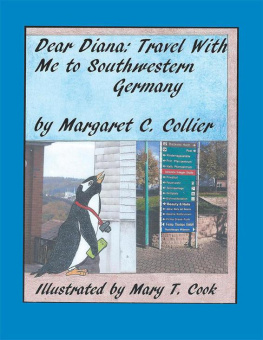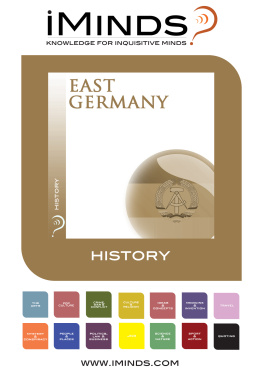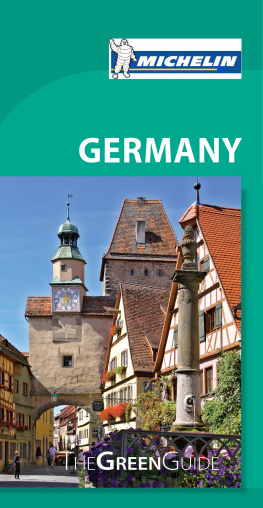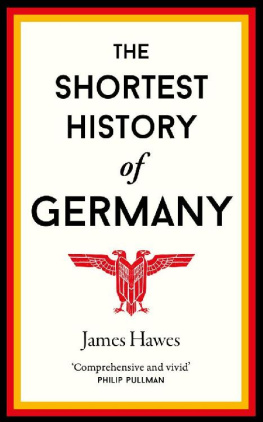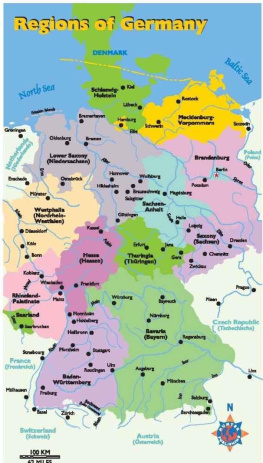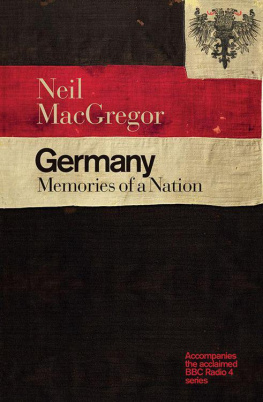Copyright 2016 by Margaret Collier. 741393
ISBN: Softcover 978-1-5144-9080-8
Hardcover 978-1-5144-9081-5
EBook 978-1-5144-9079-2
All rights reserved. No part of this book may be reproduced or transmitted in any form or by any means, electronic or mechanical, including photocopying, recording, or by any information storage and retrieval system, without permission in writing from the copyright owner.
Rev. date: 05/27/2016
Xlibris
1-888-795-4274
www.Xlibris.com
This book is dedicated to friends and family who have encouraged me to travel. Special thanks to my son Andy and his wife Kellie who took time to be our guide through this part of Ger many.
Special thanks to my friend and colleague, Mary T. Cook.

This collage of favorite places in South Western Germany takes us from local train stations to Roman ruins to village stores to Buchenwald and to a US Army base now closed and forgotten about except by those who served t here.
Germany evokes many images in the mind, cuckoo clocks, mountains, castles, fine chocolate, wooden train stations, Roman ruins, and world history. It is a country that has remade itself and its image since the end of World War II in 1945. Like the mythological phoenix, it rose out the ashes of those troubled times and is now a relative model of economical stability. It is also a country that has seen powerful civilizations make their mark on its lands and its cultures. My recent trip only took me into South Western Germany. Within its confines of geography, I saw two very important locations: Buchenwald, the infamous concentration camp near Weimar and the Black Gate of T rier.
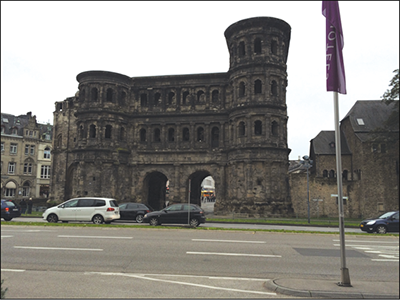
The Black Gate is part of the original Roman fortification in Trier. Climbing to the top of the structure, you can see where the Roman soldiers kept their guard, slept, ate and in general, where they lived while on duty. It was quite thrilling to walk the same stairs as the Roman conquerors of this area in what is now Ger many.
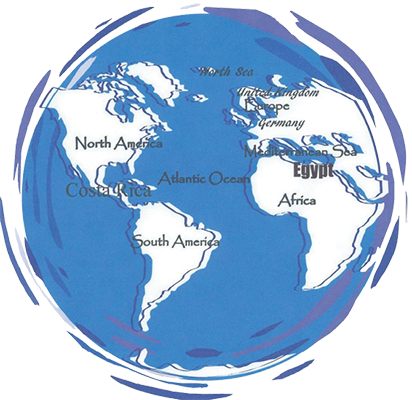
Where is Germany? Germany is in Northern Europe. It is mainly an inland country sharing its borders with France, Switzerland, Belgium, the Netherlands, Poland, the Czech Republic and Austria. They have some coastline with the North Sea and with the Baltic Sea. They boast one of the worlds most scenic rivers, the Danube.The Danube is lined with castles and other beautiful small cities, a sightseers para dise
Frankfurt, Germany is a large industrial city and it is a good example of the current economical stability of Germany. The airport is one of the largest hubs in the world and the home to many airlines. From Frankfurt the first place I was to visit was the small town of Schopp where my son currently lives. What a lovely and picturesque town, nestled near those traditional green rolling hills that Germany is famous for and just small enough to be really quaint and relaxing. The sign below shows what is in the town and this type of sign is often found in small towns so that you know what types of businesses pre vail.
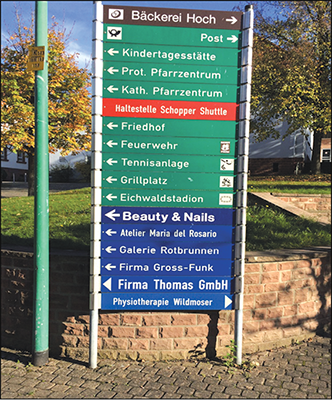
While I am not fluent in German, I could pick out some of the words and understand what business they referred to such as Grillplatz, it is a local restaurant. It was delightful walking down to the bakery on many mornings for fresh bread, cheese and lunchmeats. Everyone was very friendly and most people spoke English.The flower shop had a beautiful bronzed heron in front of it. The mainstreet is very quiet, typical of small German towns and luckily Andy speaks German and was able to translate for us at restaur ants!
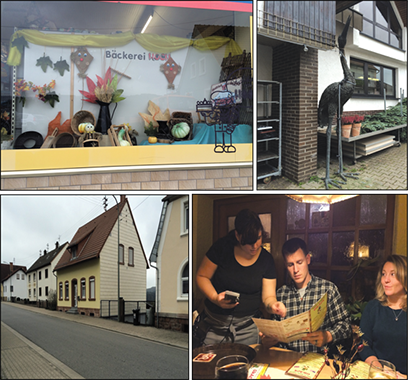
When you leave Schopp there is a stone with the towns name etched into it and this is also a custom in many parts of Ger many.
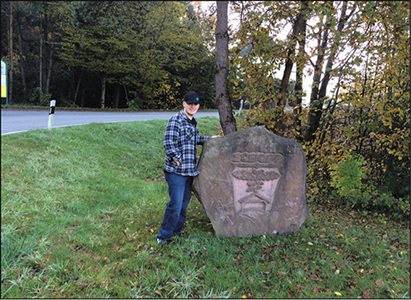
Our first road trip in South Western Germany was to the town of Bamberg where my husband was stationed in the late 1960s.The army base was closed last year and the land was returned to the city of Bamberg and the country of Germany. Even so, many of the buildings and parts of the surrounding grounds are there along with the memories for those who were stationed there. Many people living near the old base recall when it was built and remember well its importance in the city.
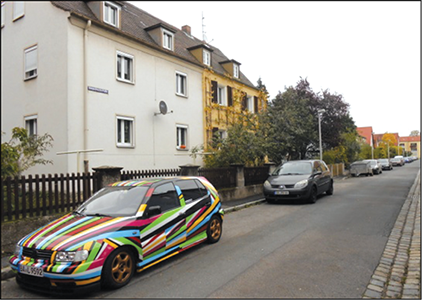
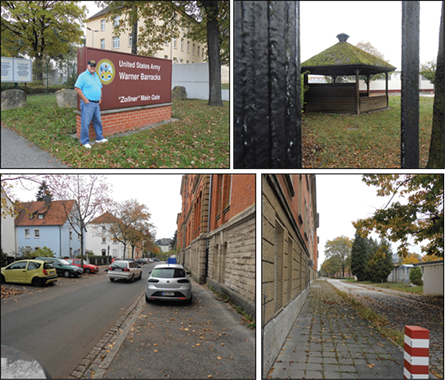
My husband was an MP in the late 1960s and early 1970s and here we see him in front of the old barracks and the streetway where the gate was that he guarded. While we were there a gentleman living across the street came and out and talked to us about the US troops that used to be there, he seemed to remember it all very well.He lived there when my husband was stationed there nearly 50 years ago. Once you leave the area of the army facility and go into downtown Bamberg, it seems to have changed very little according to my hus band.
From Bamberg we made our way to Weimar. The countryside affords a beautiful drive through farmland and valleys with the occasional ruins of old castles that once existed. Tunnels have been placed in areas where it was necessary to go through mount ains.
Driving through this beautiful countryside certainly makes a person reflect on the past of Germany and of the many different peoples who have passed over these same lands and rivers and through the densely wooded forests. Remnants of past civilizations can be seen today, especially the occupation of the Romans. The Celts occupied these territories during the 1 st Millennium B.C. The Rhine, Danube and Main River valleys were eventually taken over by the Germanic tribes after pushing the Celts out of this area during the 2 nd century B.C. While the Romans did fight to take back territories that were lost, they eventually ceded the territories to the Germanics.Below is the beautiful Danube River Valley as it is seen t oday.
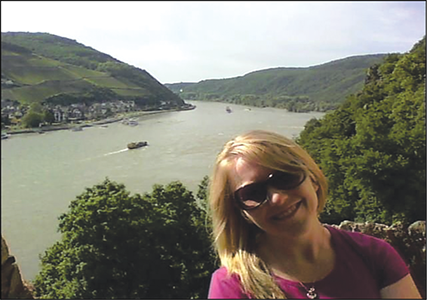
Germany has seen many cultures during its history, the Celts, Romans, Germanics, Goths,the Franks and the Prussians, along with the influence of countless others. It was not until 1871 that Germany became united by the Prussian leader Kaiser Wilhelm I.The semblance of unity and peace was disrupted in 1914 with the assasinaion of Archduke Franz Ferdinand and his wife of Austria-Hungary, partially provoking the onset of World War I. Germany was defeated during World War I and was placed under the Allied countries for its occupa tion.
Between 1918 and 1939 Germanys leadership changed drastically and Adolf Hitler became Chancellor. This paved the way for his dictatorship over Germany and the subsequent start to World War II in 1939, bringing with it the persecution of the Jewish race and other minority groups for the next 5 years. This persecution known as the Holocaust was responsible for the death of nearly six million Jewish citizens. From the end of World War II in 1945 until 1989 Germany was divided. The East Germany/West Germany division was imposed after the wars end. They saw a United Germany once again in 1999 when the wall was ceremoniously torn down. The momentum for a strong Germany has remained unabated and it is a leader in the European Common market. Germanys geographical beauty continues to make it a top European tourist destina tion.
Next page
